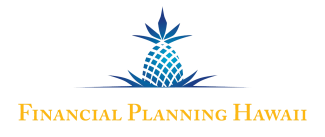
Where to Stash Cash Now
Where to Stash Cash Now
By John H. Robinson (September 24, 2022)
My last article, “I was right about interest rates” was a not-so-“humble brag” about how I have been cautioning Financial Planning Hawaii clients for years about the risk of owning bond mutual funds in a rising interest rate environment. Anyone who knows anything about my academic research-based approach to investing knows that I never (as in, NOT EVER) make predictions about the near-term direction of the stock market or how long/how much a particular downward or upward trend will continue. I learned in college econ that the stock market follows a random walk and 30-plus years of professional investing experience has done nothing to cause me to challenge that tenet. The bond market, however, is not quite the same. My guidance that consumers should be aware of the risk of rising interest rates was not a prediction, but rather an observation that, after declining steadily for nearly forty years, interest rates on bonds were approaching zero and could go no lower. At that point, there was little to gain from locking in historic low yields and much to lose if rates started to rise.
While I am both proud and relieved to have helped people avoid the carnage that many bond mutual fund/ETF investors have experienced so far in 2022, the challenge now lies in figuring out how to get all of that idle cash back to work now that rates are rising. If we had a good sense of how much interest rates would rise and how long it would take to get there, this task would be easy. Alas, calling the upside is not as obvious as recognizing the bottom limit. But we do have a few clues. First, we know that inflation has been above 7% for nearly a full year now and has shown no sign of abating in the near term. Thus far, the interest rates on traditional fixed income investments (e.g., treasuries and CDs) are lagging far behind and are actually losing money in terms of purchasing power. Second, we know that the Federal Reserve views the current inflationary environment as an existential threat to the economy and has publicly stated that it will continue raising rates to fight it. Third, we have witnessed rates rise more rapidly through the first nine months of 2022 than at any time since the late 1970s. Earlier this year, I wrote that I would not be surprised to see rates rise as much as 3% for the year. Interest rates on T-bills have risen from around .2% to start the year to over 4% today. I am very much surprised by that rate of increase. At the same time, interest rates are still well below the historical average for the past 90 years.
Taken collectively, here is where this data leads me:
- Series I Savings Bonds, despite their meager $10,000 per person, per calendar year purchase limit, and despite the truly awful TreasuryDirect.gov website, I-bonds remain a uniquely effective tool for keeping pace with inflation.
- Treasury Inflation-Protected Securities (TIPS) may be a good call for cash in retirement accounts, but I am disinclined to extend maturities beyond 2-3 years.
- Certificates of Deposit & T-Billls. With 12-month CD rates now nudging above 4%, I am comfortable extending maturities out as far as 18 months – 2 years. If rates hit 5%, I will likely encourage clients to resume constructing laddered maturity portfolios as long as 3-5 years. At this juncture, this does not seem farfetched. If inflation does indeed subside relatively quickly, locking in peak rates for several years may allow investors to once again earn positive real returns and make up for some of the purchasing power they are losing today. If inflation persists, investors are going to have to rely on other asset classes and types (e.g., rising dividend stocks?) to help them maintain their standards of living over time.
- Continue to AVOID bond mutual funds/ETFs (including balanced stock and bond funds and retirement income funds) as if they were that week-old spicy ahi roll in the back of your fridge.
John H. Robinson is the owner/founder of Financial Planning Hawaii, Fee-Only Planning Hawaii, and Paraplanning Hawaii. He is also a co-founder of fintech software-maker Nest Egg Guru.
DISCLOSURES
Securities offered through J.W. Cole Financial, Inc. (JWC) member FINRA/SIPC. Advisory services offered through Financial Planning Hawaii and J.W. Cole Advisors, Inc. (JWCA). Financial Planning Hawaii and JWC/JWCA are unaffiliated entities.
Fee-only financial planning services are provided through Financial Planning Hawaii, Inc. DBA Fee-Only Planning Hawaii, a separate state of Hawaii Registered Investment Advisory firm. Financial Planning Hawaii does not take custody of client assets nor do its advisers take discretionary authority over client accounts.
The information contained herein is general in nature. Neither Financial Planning Hawaii nor J.W. Cole provides client-specific tax or legal advice. All readers should consult with their tax and/or legal advisors for such guidance in advance of making investment or financial planning decisions with tax or legal implications

